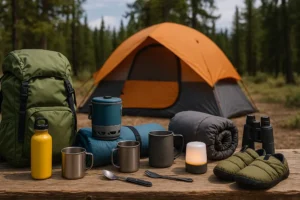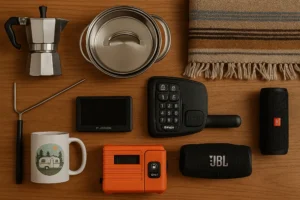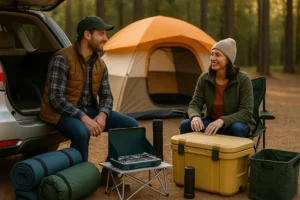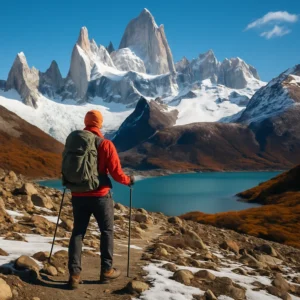There’s a quiet revolution happening in the backcountry. More and more hikers are trading in their traditional mummy bags for something sleeker, lighter, and far more versatile: the backpacking quilt. If you’ve ever groaned at stuffing a bulky sleeping bag into your pack or fought with zippers in the middle of the night, a backpacking quilt might just be your new best friend.
But what makes a quilt so different—and why are long-distance hikers swearing by it? Let’s break it down.
What is a Backpacking Quilt?
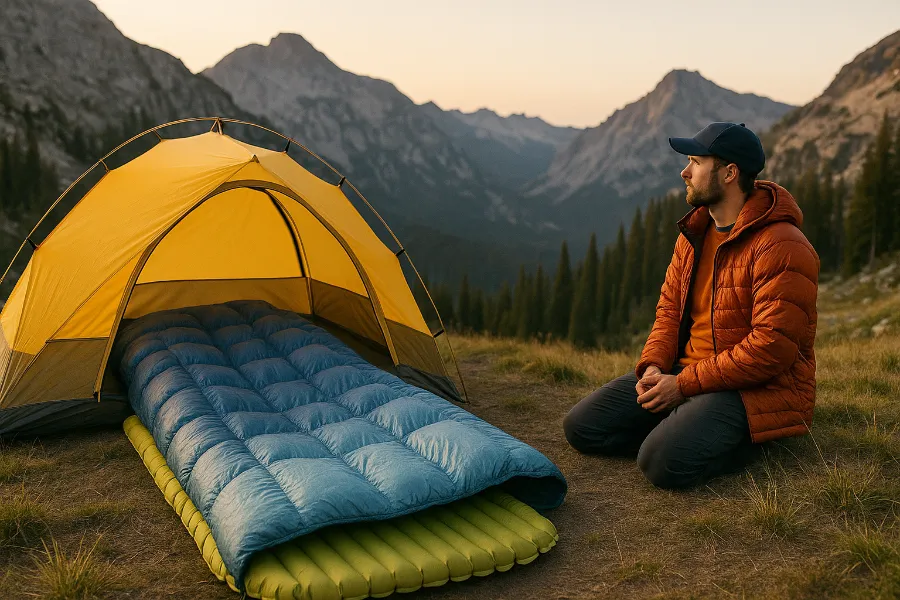
At first glance, a backpacking quilt looks like a sleeping bag with the bottom cut off. And in a way, that’s exactly what it is. Traditional sleeping bags wrap fully around your body with insulation underneath and above you. But here’s the thing—insulation compressed under your body doesn’t really keep you warm. The warmth comes from your sleeping pad below and the loft of the insulation above.
Quilts take advantage of this fact. They eliminate the wasted material on the underside, leaving you with an open-back blanket-style design that straps to your pad or tucks underneath you. The result? Less weight, more packability, and a lot more freedom of movement.
Originally popular with ultralight thru-hikers, backpacking quilts are now becoming mainstream. They’re not just for hardcore minimalists anymore—they’re for anyone who wants to shave ounces without sacrificing comfort.
Benefits of Using a Backpacking Quilt
So why make the switch? Here’s what makes quilts so appealing:
Lightweight by Design
Without the full zipper, hood, and bottom insulation, quilts weigh significantly less than sleeping bags. Shaving even a few ounces matters on multi-day hikes, and quilts can cut nearly a pound compared to similar-rated bags.
Versatility in Weather
A quilt is like a convertible car—you can adjust it to the conditions. Hot night? Open it up like a blanket. Cold morning? Cinch the straps and footbox tight to trap heat. That adaptability is a game-changer for people hiking through varied climates.
Comfort and Freedom
Tired of feeling like a burrito in your mummy bag? Quilts let you sprawl, curl, or side-sleep without restriction. For restless sleepers, this freedom is worth its weight in gold.
Compact Packability
Quilts compress smaller than sleeping bags. That means more room in your pack for food, gear, or even the luxury of carrying a smaller backpack altogether.
Potential Drawbacks
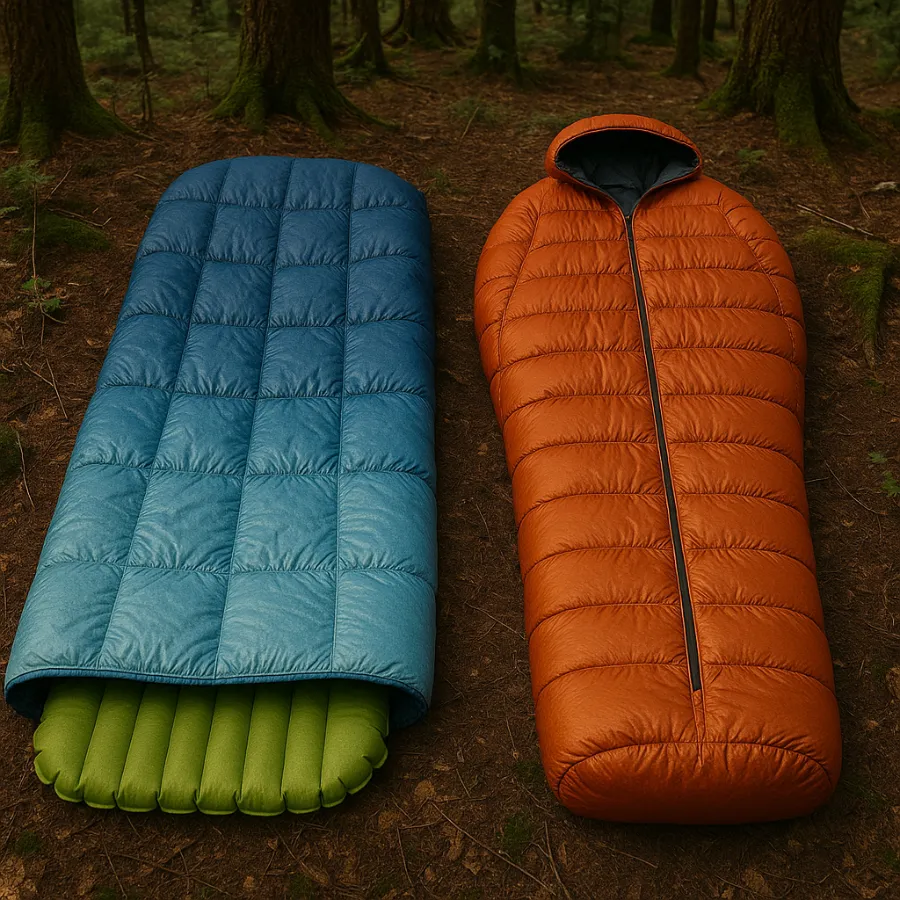
Of course, quilts aren’t perfect. Here are a few things to keep in mind:
- Drafts: Because they’re open-backed, quilts can let in cold air if not set up correctly. Using straps and tucking properly solves this—but it takes practice.
- Learning Curve: New users may struggle to stay warm the first few nights until they learn the system.
- Extreme Cold: For subzero alpine expeditions, a mummy bag still reigns supreme. Quilts excel in three-season conditions but have limits.
Choosing the Right Backpacking Quilt
Buying a quilt isn’t as simple as grabbing one off the shelf. Here’s what to consider:
Temperature Rating
Pay close attention to comfort vs limit ratings. Most quilts are designed for three-season use (20–40°F). If you’re a cold sleeper, consider going lower.
Insulation: Down vs Synthetic
- Down: Lighter, more compressible, but vulnerable to moisture.
- Synthetic: Bulkier, but performs better when wet and often cheaper.
Fit and Size
A quilt that’s too narrow won’t wrap properly. Taller or broader users should size up in length and width.
Features to Look For
- Draft collar to seal heat around your neck.
- Footbox that can cinch closed or open flat.
- Pad attachment straps to minimize drafts.
Backpacking Quilt vs Sleeping Bag
Here’s a quick comparison:
| Feature | Backpacking Quilt | Sleeping Bag |
|---|---|---|
| Weight | Lighter | Heavier |
| Warmth Efficiency | Requires good pad setup | More forgiving |
| Versatility | Highly adjustable | Fixed design |
| Comfort | Freer movement | Restrictive mummy cut |
| Extreme Cold Use | Limited | Better suited |
Who should choose a quilt?
- Ultralight backpackers.
- Side sleepers or restless sleepers.
- Hikers covering varied climates.
Who should stick with a bag?
- Winter mountaineers.
- Beginners nervous about drafts.
Tips for Staying Warm with a Backpacking Quilt
You can sleep just as warm in a quilt as in a sleeping bag if you know a few tricks:
- Use a proper sleeping pad. Your pad’s R-value matters. A quilt without a warm pad is like a jacket without a shirt.
- Dress smart. Layer with a beanie, socks, and base layers. Don’t overdress—your body heat needs to loft the insulation.
- Seal it up. Use pad straps to eliminate side drafts. Cinch the footbox and neck area on colder nights.
- Adapt. On warm nights, drape the quilt loosely. On cold ones, tuck tightly under your body.
Top Brands & Recommendations
If you’re ready to make the leap, here are some brands leading the way:
- Enlightened Equipment (EE): The Revelation and Enigma are thru-hiker favorites.
- Katabatic Gear: Known for premium craftsmanship and excellent draft protection.
- Therm-a-Rest: The Corus quilt is a solid choice available in mainstream retailers.
- Hammock Gear: Great for hammock campers but works on the ground too.
- Budget Picks: REI Co-op and Outdoor Vitals offer affordable options for first-time quilt buyers.
Care and Maintenance
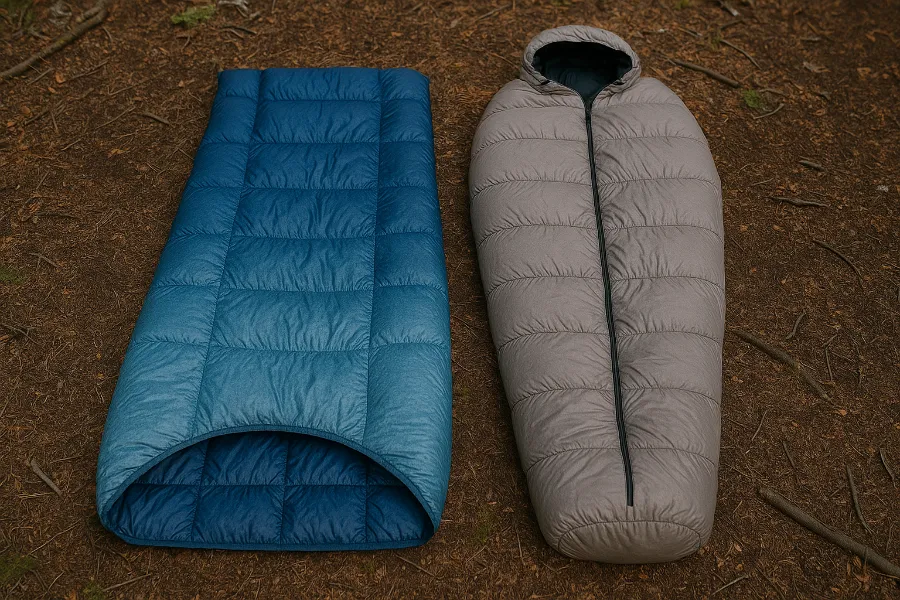
A quilt can last a decade or more if you treat it right:
- Storage: Never keep it compressed long-term. Store in a large cotton sack or hang it.
- Cleaning: Wash down quilts with specialized soap; synthetic can handle gentler machine washes.
- Field Care: Always use a groundsheet or sleeping pad to keep dirt and moisture away.
Backpacking Quilt FAQs
Can a quilt really replace a sleeping bag?
Yes—for most three-season backpacking, a quilt works just as well and often better.
What temperatures are quilts best for?
Generally between 20–40°F, though high-quality quilts can go lower with good technique.
Are quilts good for side sleepers?
Absolutely. The open design makes them far more comfortable for side sleepers than mummy bags.
Do I need a bivy or liner with a quilt?
Not always, but a liner adds warmth and keeps your quilt cleaner. A bivy helps block wind in exposed camps.
Conclusion
The backpacking quilt isn’t just a trend—it’s a smarter, lighter way to sleep outside. By cutting unnecessary bulk and giving you room to move, quilts deliver freedom without compromising comfort. Sure, there’s a learning curve, but once you dial it in, you’ll wonder why you ever lugged around a heavy mummy bag.
So if you’re planning your next trek, maybe it’s time to ditch tradition. Pack a backpacking quilt and discover how light, cozy, and versatile the backcountry can really feel.




